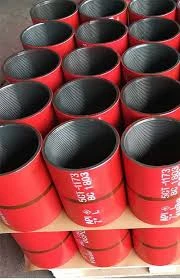- Afrikaans
- Albanian
- Amharic
- Arabic
- Armenian
- Azerbaijani
- Basque
- Belarusian
- Bengali
- Bosnian
- Bulgarian
- Catalan
- Cebuano
- Corsican
- Croatian
- Czech
- Danish
- Dutch
- English
- Esperanto
- Estonian
- Finnish
- French
- Frisian
- Galician
- Georgian
- German
- Greek
- Gujarati
- Haitian Creole
- hausa
- hawaiian
- Hebrew
- Hindi
- Miao
- Hungarian
- Icelandic
- igbo
- Indonesian
- irish
- Italian
- Japanese
- Javanese
- Kannada
- kazakh
- Khmer
- Rwandese
- Korean
- Kurdish
- Kyrgyz
- Lao
- Latin
- Latvian
- Lithuanian
- Luxembourgish
- Macedonian
- Malgashi
- Malay
- Malayalam
- Maltese
- Maori
- Marathi
- Mongolian
- Myanmar
- Nepali
- Norwegian
- Norwegian
- Occitan
- Pashto
- Persian
- Polish
- Portuguese
- Punjabi
- Romanian
- Russian
- Samoan
- Scottish Gaelic
- Serbian
- Sesotho
- Shona
- Sindhi
- Sinhala
- Slovak
- Slovenian
- Somali
- Spanish
- Sundanese
- Swahili
- Swedish
- Tagalog
- Tajik
- Tamil
- Tatar
- Telugu
- Thai
- Turkish
- Turkmen
- Ukrainian
- Urdu
- Uighur
- Uzbek
- Vietnamese
- Welsh
- Bantu
- Yiddish
- Yoruba
- Zulu
Crossover Percentage in Puppy Joint Performance Analysis
Understanding Crossover Pup Joints in Modern Mechanical Design
Crossover pup joints are essential components in the realm of mechanical engineering and are predominantly used in the oil and gas industry. This article delves into the significance, design features, and applications of crossover pup joints, highlighting their importance in facilitating smooth operations in drilling activities.
What is a Crossover Pup Joint?
A crossover pup joint is a short length of pipe with specific threading designed to connect two differently sized sections of drill pipe or tubing. The term pup joint generally refers to a short pipe, usually measuring between 2 to 12 feet long. When the term crossover is added, it indicates that the joint is meant to bridge two pipe sizes or types, ensuring continuity in the flow of fluids.
These joints are crucial in situations where operations require transitioning between equipment that differ in dimensions or specifications. The ability to execute such transitions seamlessly without compromising the integrity of the system makes crossover pup joints indispensable in various industrial applications.
Design Features
The design of crossover pup joints is paramount for their functionality and reliability. Here are several essential features
1. Material Selection The materials used to manufacture crossover pup joints must possess high strength and corrosion resistance. Common materials include carbon steel and alloys designed to withstand extreme conditions.
2. Threading The ends of crossover pup joints are typically threaded to enable easy connection and disconnection. The threading must be precise to ensure leak-proof connections under high-pressure conditions.
3. Pressure Ratings Each crossover pup joint is engineered to accommodate specific pressure requirements. Understanding the pressure ratings is crucial to ensuring safety and reliability in operations.
crossover pup joint

4. Customization Many crossover pup joints can be tailored to meet specific operational needs. This customization can involve varying lengths, thread types, and materials based on the application and environment.
Applications of Crossover Pup Joints
Crossover pup joints find their primary applications in the oil and gas industry, particularly during drilling operations. Here are some notable uses
1. Drilling Operations During drilling, it is often necessary to transition between different sizes of drill pipes. Crossover pup joints facilitate this transition, ensuring a continuous flow of drilling mud and other fluids.
2. Production Well Completion In production phases, these joints may allow the connection of production tubing to various wellheads or other equipment types, optimizing the extraction process.
3. Maintenance and Repair In the event of a damaged or worn-out pipe, crossover pup joints enable quick repairs by allowing easy replacement without the need for complete system overhauls.
4. Flexibility in Equipment In operations involving multiple drilling rigs or varying equipment setups, crossover pup joints provide the flexibility necessary for efficient operations, accommodating different equipment sizes and types.
Conclusion
Crossover pup joints are invaluable components in modern mechanical systems, particularly in the oil and gas sector. Their role in connecting various sizes of pipes ensures the smooth operation of drilling and production activities. With their robust design, customized features, and reliability, crossover pup joints not only enhance safety but also increase the efficiency of operations. As technology advances, innovations in materials and design are likely to enhance the capabilities and effectiveness of crossover pup joints, further solidifying their importance in the industrial landscape. Understanding their functionalities and applications lays the groundwork for improving mechanical designs and operational strategies in various fields.
-
Tubing Pup Joints: Essential Components for Oil and Gas OperationsNewsJul.10,2025
-
Pup Joints: Essential Components for Reliable Drilling OperationsNewsJul.10,2025
-
Pipe Couplings: Connecting Your World EfficientlyNewsJul.10,2025
-
Mastering Oilfield Operations with Quality Tubing and CasingNewsJul.10,2025
-
High-Quality Casing Couplings for Every NeedNewsJul.10,2025
-
Boost Your Drilling Efficiency with Premium Crossover Tools & Seating NipplesNewsJul.10,2025







